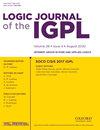LSTM 与 CNN 在真实船舶轨迹分类中的对比
IF 0.8
4区 数学
Q2 LOGIC
引用次数: 0
摘要
在海事环境中,船型识别对于当局控制正在进行的活动至关重要。虽然自动识别系统对某些船只来说是强制性的,但如果船只自愿或不自愿安装,就会导致一系列问题,这就是为什么使用雷达等跟踪替代方法对船只监控系统来说是完全互补的。然而,雷达能提供位置,但不能提供探测到的内容。如果系统能够在雷达探测到的船只信息中添加分类信息,就有可能加强对正在进行的活动的控制,提高海上交通的安全性,并优化当局的现场检查资源。本文利用来自真实船只轨迹的非平衡数据,解决了二元分类问题(渔船与所有其他船只)。它采用深度学习方法,比较了卷积神经网络和长短期记忆这两种主要趋势。本文提出了加权交叉熵方法,并与经典的数据平衡策略进行了比较。与经典机器学习方法和经典平衡技术相比,这两种网络在应用加权交叉熵时都表现出了很高的性能。这项工作被证明是解决无语境识别渔船这一国际难题的新方法。本文章由计算机程序翻译,如有差异,请以英文原文为准。
LSTM vs CNN in real ship trajectory classification
Ship-type identification in a maritime context can be critical to the authorities to control the activities being carried out. Although Automatic Identification Systems has been mandatory for certain vessels, if a vessel does not have them voluntarily or not, it can lead to a whole set of problems, which is why the use of tracking alternatives such as radar is fully complementary for a vessel monitoring systems. However, radars provide positions, but not what they are detecting. Having systems capable of adding categorical information to radar detections of vessels makes it possible to increase control of the activities being carried out, improve safety in maritime traffic, and optimize on-site inspection resources on the part of the authorities. This paper addresses the binary classification problem (fishing ships versus all other vessels) using unbalanced data from real vessel trajectories. It is performed from a deep learning approach comparing two of the main trends, Convolutional Neural Networks and Long Short-Term Memory. In this paper, it is proposed the weighted cross-entropy methodology and compared with classical data balancing strategies. Both networks show high performance when applying weighted cross-entropy compared with the classical machine learning approaches and classical balancing techniques. This work is shown to be a novel approach to the international problem of identifying fishing ships without context.
求助全文
通过发布文献求助,成功后即可免费获取论文全文。
去求助
来源期刊
CiteScore
2.60
自引率
10.00%
发文量
76
审稿时长
6-12 weeks
期刊介绍:
Logic Journal of the IGPL publishes papers in all areas of pure and applied logic, including pure logical systems, proof theory, model theory, recursion theory, type theory, nonclassical logics, nonmonotonic logic, numerical and uncertainty reasoning, logic and AI, foundations of logic programming, logic and computation, logic and language, and logic engineering.
Logic Journal of the IGPL is published under licence from Professor Dov Gabbay as owner of the journal.

 求助内容:
求助内容: 应助结果提醒方式:
应助结果提醒方式:


